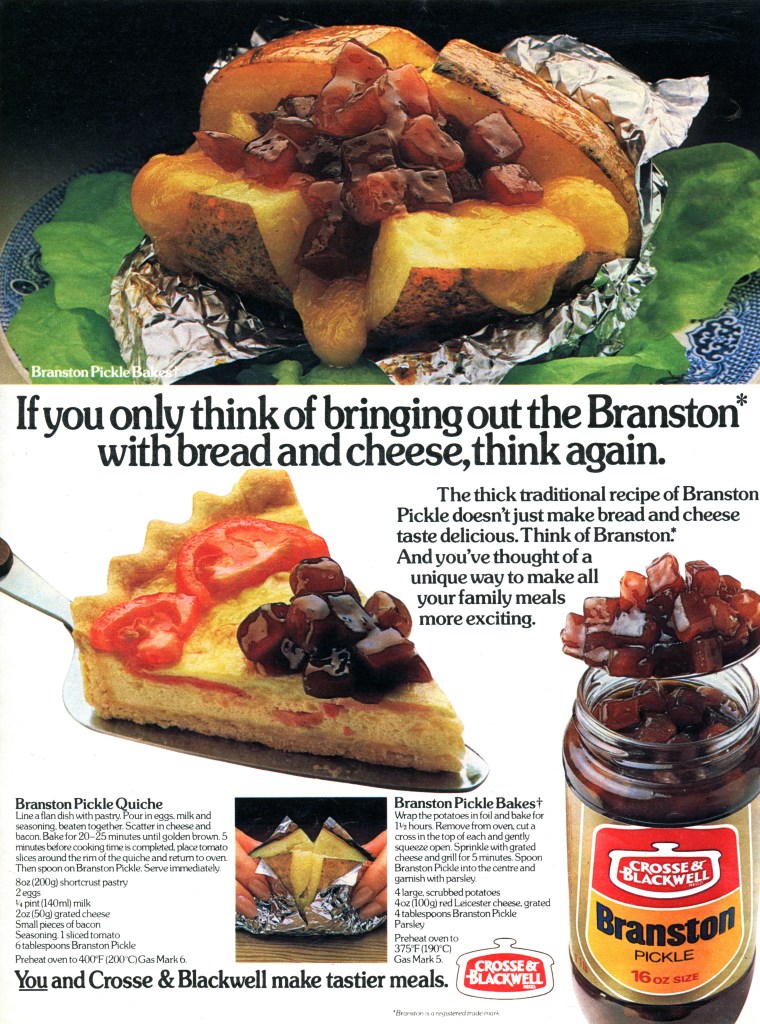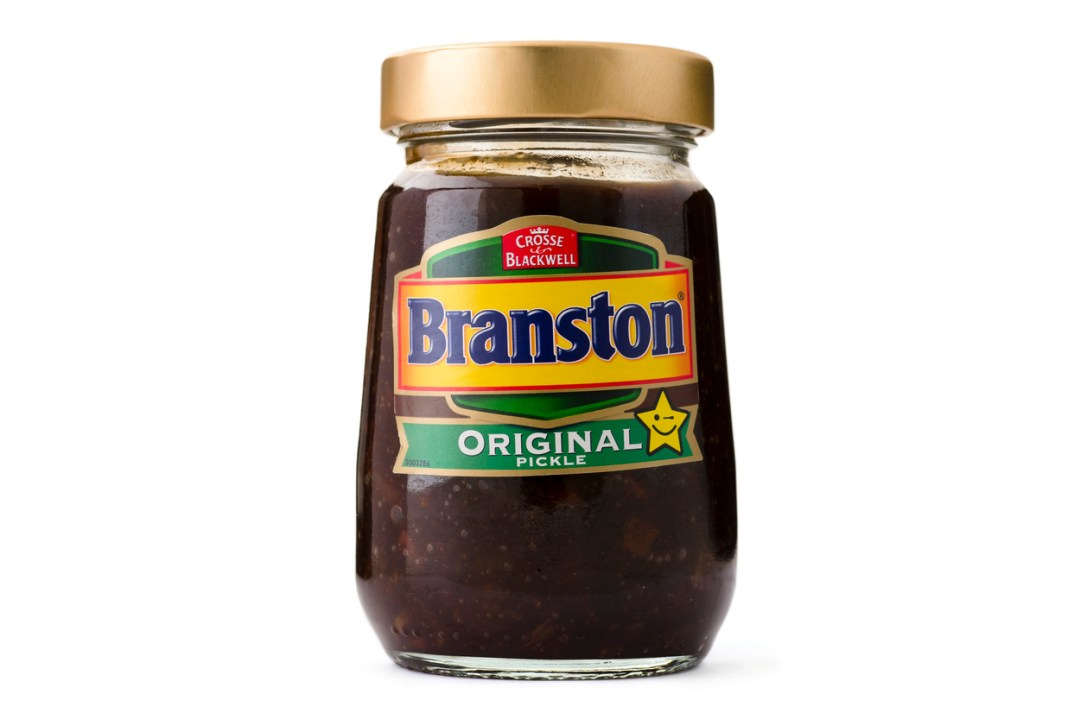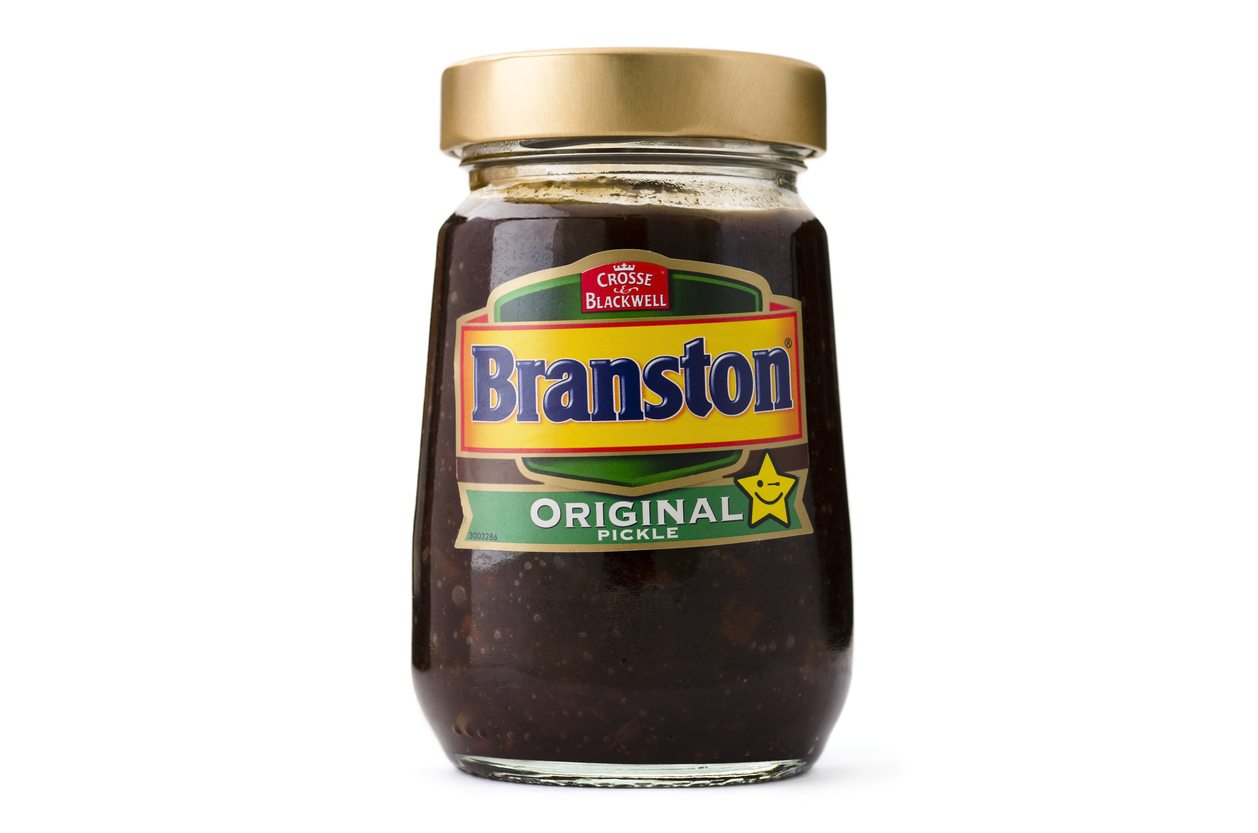There is no shortage of foodstuffs (or people) jostling for admission into the hallowed hall of ‘national treasures’. Perhaps the best litmus test for right of entry is time-proven popularity, and appeal across class and generational divides. No mere passing flavour of the month or millennial indulgence. Something that unites us all in affection. Branston Pickle ticks the boxes.
Branston and cheddar cheese were made for each other. Like jam and clotted cream, or rhubarb and custard; brought together they become more than the sum of their parts. One brings fruity tartness in perfect juxtaposition to the other’s creamy richness. Many a grand dinner party features an elaborate cheeseboard accompanied by membrillo and pickled figs. But deep down we just want a mature wedge of cheddar with Branston.
There is something unapologetic about this pickle. The jar is squat and broad; the colour scheme – red and yellow and green and blue – almost childish. No concessions to modish branding, just the longstanding appeal to ‘Bring out the Branston’ emblazoned around the lid.
The slogan dates back to a television advert launched in 1972. It had a reputation as a man’s spread. An earlier advert assures ladies: ‘You’ll probably be the most popular girl in the world when you serve Cross & Blackwell Branston Pickle. So start spoiling the man in your life by giving him Branston…’

Its components are humdrum: carrot, swede (which on the jar they insist on calling rutabaga), onion and cauliflower. The vegetables are enlivened with barley malt vinegar, sugar, apple, tomato, dates, herbs and spices, to produce the distinctive ‘tang’. There is a deep savouriness alongside the sweet – a certain ‘umami’ quality. You can see similarities between it and some condiments on the subcontinent, like Bengali date and tomato chutney and Rajasthani sweet and sour lemon pickle. It has the hallmarks of Empire.
There has been the odd attempt at new hits. Branston Orchard Fruit Chutney is touted as a ‘tasty alternative’. And to celebrate Branston’s centenary, this year fans competed to win a few exclusive tins of posh ‘Braviar’ to enjoy with blinis and bubbles. But, for most of us, choice need extend only to the standard pickle’s three variations in chunkiness.
It was first produced by Crosse & Blackwell in the village of Branston, Staffordshire, in 1922, in a factory originally intended to be the National Machine Gun Factory (building delays meant construction wasn’t finished before the war ended in 1918). Within a few years, Crosse & Blackwell moved production to Bermondsey where they were closer to the supply of raw materials, and Branston was produced there until 1969.

The brand was bought by Premier Foods in 2002 and then changed hands again, this time to Mizkan in 2013, but it is still mixed and bottled here in the UK, in Bury St Edmunds in Suffolk, with ingredients sourced from across the country.
And we still can’t get enough of the stuff. A fire at the Branston factory in 2004 temporarily halved availability causing nationwide panic-buying (production of Lloyd Grossman’s sauces were affected by the same fire, but don’t seem to have inspired the same reaction among customers). One in three UK households buys Branston each year, and it is available in more than 50 countries.
There is something pleasing about its ugliness: brown and lumpy. A rebuke to Instagram. The unassuming appearance makes its delightful flavour all the more surprising: the vinegary tang, the gentle spice, the sweet fruitiness, all in perfect balance. And its uses are not limited to a cheese sarnie or a Ploughman’s lunch. Its makers are full of recipe ideas to ‘amaze the bolognese’, ‘upgrade the marinade’ and ‘glorify the cottage pie’.
In a world of ever more fancy food, Branston stands resolutely immutable. If it ain’t broke, don’t fix it. And if it ain’t Branston, forget it.







Comments